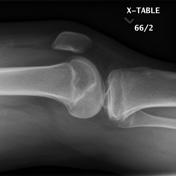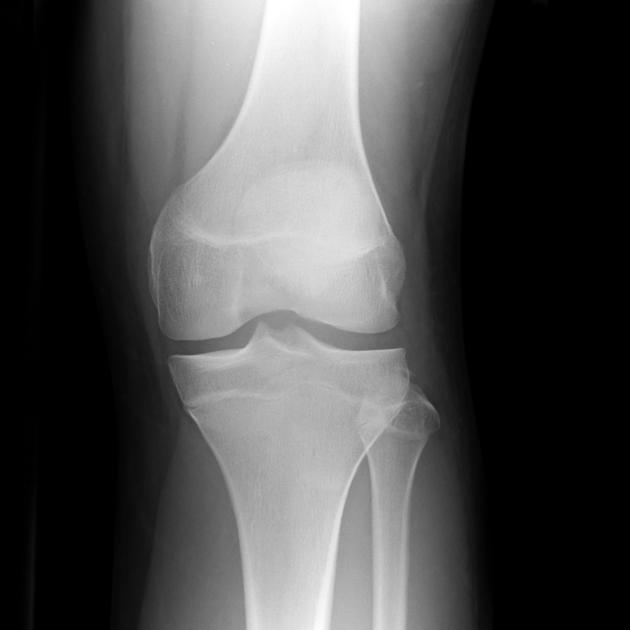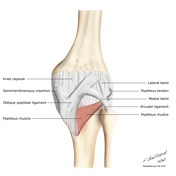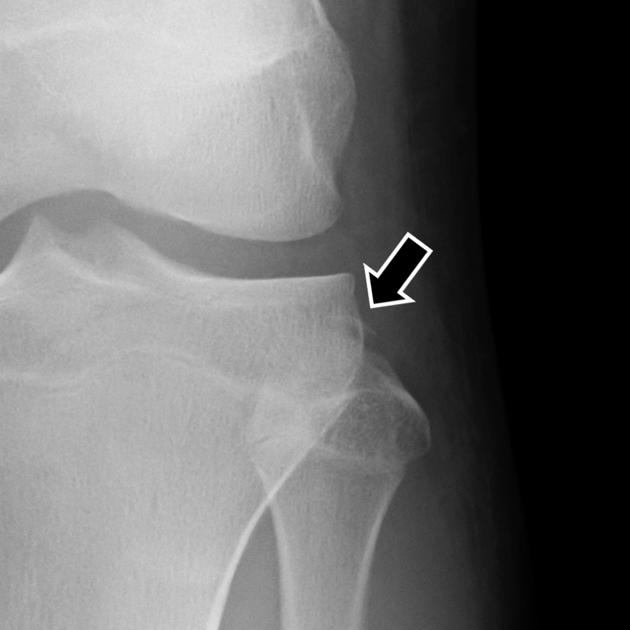Presentation
Acute knee injury



Best seen on the anterior projection is a small curvilinear calcific opacity immediately superior to the fibular styloid. The adjacent tibia is intact.



Arrow points to the sliver of bone elevated from the head of the fibula.
The posterolateral ligamentous complex of the knee includes:
- arcuate ligament
- fabellofibular ligament
- popliteal fibular ligament
- lateral collateral ligament
- biceps femoris tendon
Case Discussion
The arcuate sign is an important finding, representing an avulsion fracture of the arcuate ligament complex. The importance of this injury is that if it is not diagnosed acutely, posterolateral instability may develop which is challenging to correct, and may result in failed cruciate ligament reconstruction.




 Unable to process the form. Check for errors and try again.
Unable to process the form. Check for errors and try again.